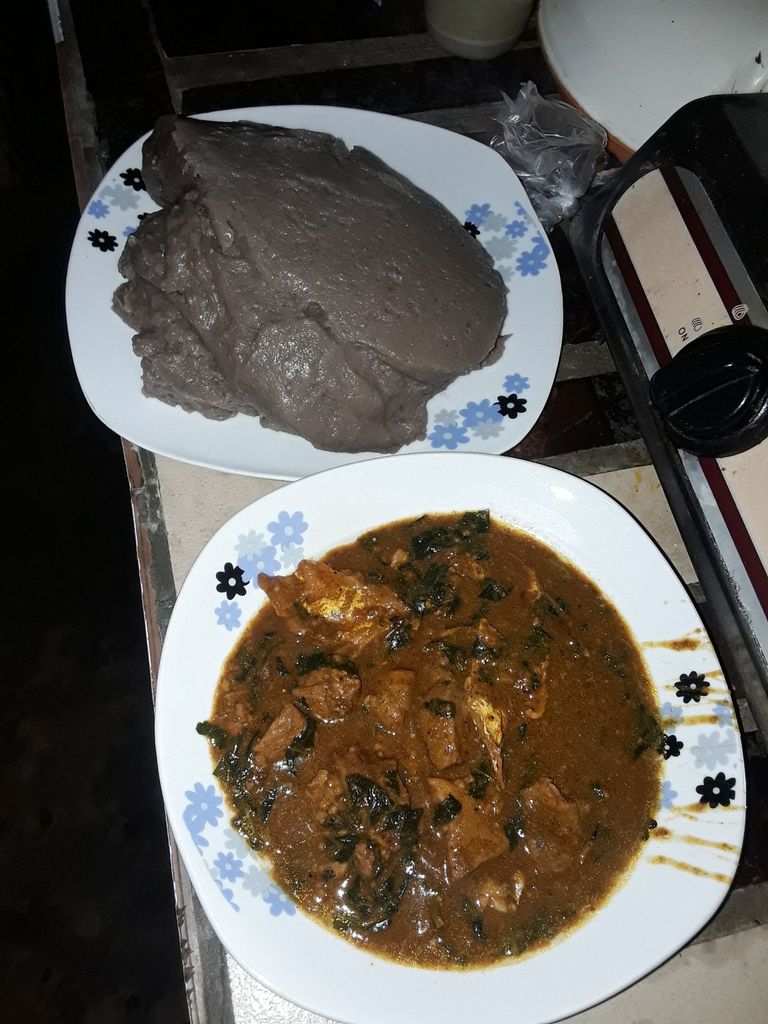With more than 250 ethnic groups and 500 languages, Nigeria is arguably one of the most ethnically and linguistically diverse nations in the world. But only the Hausa, Igbo, and Yoruba tribes are the most well-known. People in the northern, southwestern, and southern sections of the country are commonly referred to as Hausas, Yorubas, and Igbos, respectively.
Each tribe has meals that are particular to them, yet, boredom in flavors and repetition of foods lead people go intertribal when it comes to food. As a Yoruba person, for instance, I think Yoruba meal is really uncreative and bland. I therefore occasionally try dishes from different tribes, especially the Igbo tribe.
The soups made by the Igbo are well-known. No tribe can compare to them when it comes to varied leaves and creativity in using them to produce different soups, despite the widespread belief that they do not have a wide selection of foods.
As a result, you can find Igbo people eating the same meal (such as grains or swallows) over and over again for a very long period without getting tired of it or feeling redundant because they eat it with different kind of soups.
I made the choice to try one of the Igbo tribe's most well-liked soups today. Ogbono is the local name for the soup. Irvingia gabonensis dried and ground seeds serve as the soup's foundational ingredient. The huge Irvingia gabonensis tree, which can reach a height of 50 m, thrives in southern Nigeria. Depending on the climate, it blooms and bears fruit at various times throughout the year. In order to get the seeds out of the fruits, they are typically picked up after they have matured and fallen off the tree. The seeds are then taken and put on the market after being allowed to dry.
In addition to the seeds used to make ogbono soup, many people enjoy eating the ripe fruits of Irvingia. The tree also produces timbers, the wood of which is used for a variety of building projects. The plant's many parts are used medicinally to treat a wide range of ailments.
Making The Ogbono Soup
Ogbono soup's many ingredients can vary from person to person and also rely on how wealthy one is financially. The ingredients at one's disposal could also cause one to change the preparation techniques. The ingredients I personally used were as follows:
Ugwu leaves
Ogbono seeds, crayfish and dried pepper powdered together
Beef
Dried & Stock Fish
Salt & Maggi to taste

Some people preferred using leaves from various plants, such as Vernonia amygdalina (bitter leaf), uziza, utazi, or a mixture of the leaves. Some people also preferred using turkey instead of beef. This all depends on your preferences and financial means.
After giving the leaves a good wash, I immediately chopped them into tiny pieces. Additionally, the beef underwent repeated washings before being added to the soup pot. The stockfish was washed and added to the stew with the steak after that. Once the pot had been seasoned with salt, I turn on the cooking gas and place the pot containing the soup on it.
The powdered crayfish, pepper, and ogbono seeds mixture was combined in a small, heat-resistant bowl with measured amounts of palm oil. The bowl and its contents were placed in the pot that was already on a flame and sufficiently covered after being thoroughly agitated to ensure that the oil was distributed throughout. For 10 to 20 minutes, the entire contents of the saucepan were left to boil.

After that, the contents of the small bowl containing the crayfish, pepper, and ogbono in palm oil were rapidly swirled to ensure a homogeneous combination. The mixture was continually mixed until it reached the desired consistency—a thick, drawing slurry—before being placed into the kettle of boiling beef/stockfish. It was thinned out a touch by adding a little water.
The soup was then heated through before the chopped ugwu leaves were added. At this time, it is important to stop covering the soup because doing so will cause the ogbono to become less elastic or draw less. The cooking gas was then turned off after allowing the entire soup to cook for a further two to three minutes. The soup was ready.

Ogbono Goes With Any Swallow....
Ogbono is a soup that is primarily used to eat any swallow meals. Eba, semo, pounded yam, and amala are some of the other foods that are frequently consumed with ogbono. In my case, the ogbono I cooked goes well with amala.

Amala is made from yam flour. A measured amount of yaw flour is added to an equal amount of boiling water in a pot, and the mixture is continuously stirred with a pallete to create amala, a thick, semi-solid substance.

The Ogbono Soup and Amala Swallow is now ready; you may either combine the two dishes on a single plate or serve them separately. similar to how I prefer it

Depending on the ingredients used to make the soup, ogbono will have a different nutritional value. The ogbono seed, however, contains a number of fundamental nutrients that are vital to its consumers' bodies. Some individuals actually eat the seeds unprocessed because they misinterpret them for nuts.